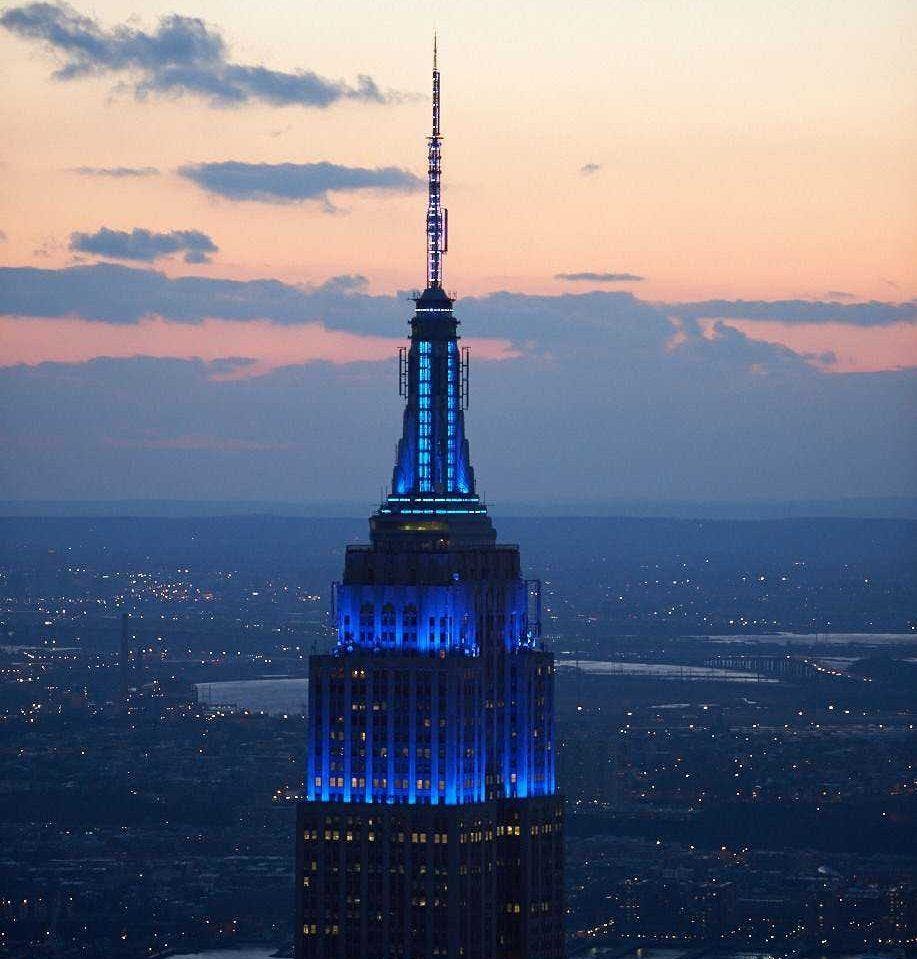Our History
Since 1965, World Monuments Fund has preserved the world's diverse cultural heritage using the highest international standards at more than 700 sites in 112 countries.


World Monuments Fund (WMF), then called International Fund for Monuments (IFM), is founded by Colonel James A. Gray, inspired by the challenges facing the Leaning Tower of Pisa.


WMF begins preservation work at the Rock-Hewn Churches of Lalibela, Ethiopia, its first official project.


After record floods hit Venice, Colonel Gray mobilizes to safeguard Italy’s heritage treasures, setting the stage for decades of engagement.


The Easter Island Committee is formed with the Chilean government. Tours to raise awareness of Rapa Nui’s cultural heritage begin.


After years of painstaking work, WMF completes the conservation of 38 works by Tintoretto at Venice’s Scuola Grande di San Rocco, comprising some of the most respected works by the Italian master.


The Hadrian Award is established to honor international leaders who have advanced the understanding, appreciation, and preservation of the world’s art and architecture. The first recipient is Carlo De Benedetti. Subsequent honorees include His Majesty King Charles III (1990), His Highness The Aga Khan (1996), and Phyllis Lambert (1997), among many others.


The Jewish Heritage Program is established to support the conservation of the built legacy of Jewish life around the world.


WMF sends its first mission to Angkor Archaeological Park, Cambodia, becoming the first Western organization to survey the temples since the 1950s.


A WMF affiliate is established in Spain, with a project portfolio that will grow to encompass everything from awe-inspiring prehistoric cave paintings to the exuberant whimsy of Catalan modernism.


WMF establishes an affiliate office in Portugal and begins work at the Tower of Belém, a project that will greatly advance the field of conservation in the country.


WMF opens an office in the United Kingdom. The new affiliate’s first project is the restoration of the Small Concert Room at St. George’s Hall in Liverpool.


WMF announced the first cycle of the World Monuments Watch, a biennial selection of heritage places that combine great significance with potential for social impact through preservation. The initial cycle includes Rapa Nui, Angkor, and numerous other sites.


Conservation work begins at Qianlong Garden, in Beijing, China, in partnership with the Palace Museum.


Following Hurricane Katrina, post-catastrophe preservation programs are established in New Orleans.


WMF returns to Lalibela after a long hiatus due to the country’s political climate.


After initial training and mapping initiatives, WMF launches the Future of Babylon initiative in response to damage to the ancient city from modern additions and the risk posed by the Iraq War.


WMF moves into office space in the Empire State Building in New York City.


After years of engagement in the region, WMF establishes an affiliate in Peru to deepen its engagement with the country’s rich cultural heritage.


WMF sets up an office in India, with a diverse portfolio ranging from Himalayan temple conservation to the rehabilitation of traditional water infrastructure.


WMF completes conservation at the richly decorated Schola Canton Synagogue in Venice, work undertaken as part of the Jewish Heritage Program.


In the face of increasing threats from climate change, natural disasters, human conflict, and more, WMF establishes the Crisis Response Program to provide resources for early recovery actions at impacted heritage sites.


Following support from WMF in preparing application materials, Babylon is offically inscribed on the UNESCO World Heritage List.


Bears Ears National Monument, a significant place for numerous Indigenous communities in the American Southwest, is selected for the Watch to raise awareness of the U.S. government’s decision to drastically reduce the ancestral landscape’s protections.


Rapa Nui is once again selected for the Watch, this time to support the Ma’u Henua Indigenous Community group in stewarding their ancestral heritage.


WMF relocates its New York office to its current home in Rockefeller Center.


WMF partners with The Metropolitan Museum of Art to create audiovisual content showcasing African heritage sites like Lalibela to enhance museumgoers’ experience of The Met’s new African art galleries.


Antakya Earthquake - World Monuments Fund was and remains the only international organization invited by the Turkish authorities to assist with emergency stabilization in Antakya after the 2023 earthquakes.


WMF opens a French affiliate office in Paris with the goal of deepening ties to local and international cultural organizations based in France.


To celebrate 35 years of engagement at Angkor, WMF holds a ceremony to officially hand over day-to-day site management at three of its four projects to local authorities.


Building upon years of leadership at the climate-heritage nexus, WMF launches the Climate Heritage Initiative to devote more resources to using preservation as a climate solution.


WMF celebrates its milestone 60th anniversary safeguarding irreplaceable heritage around the globe.

